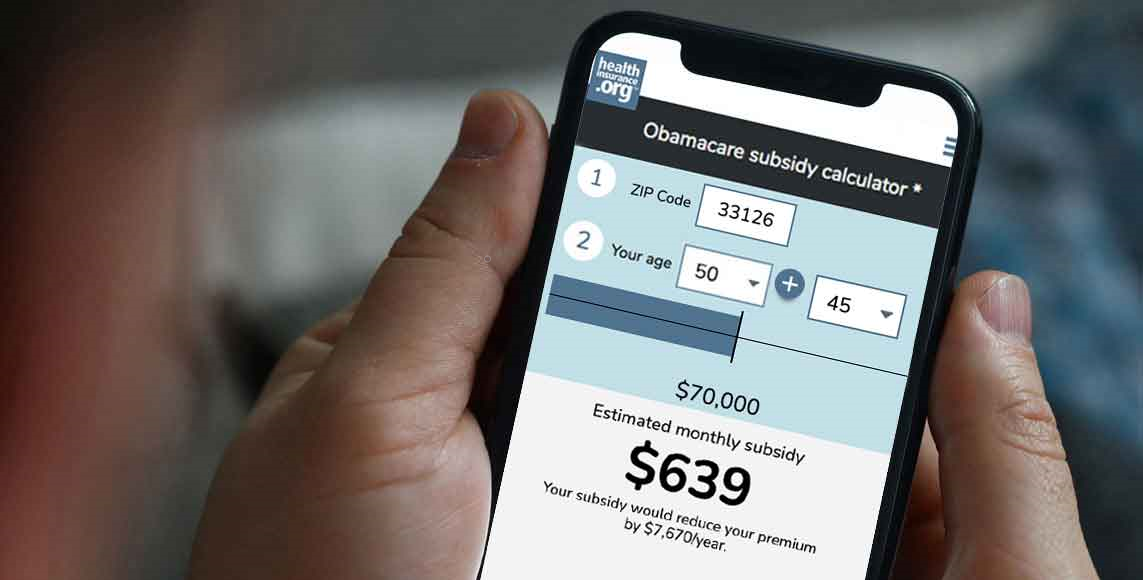Home > Short-term health insurance > Short-term health insurance in Idaho
Learn about short-term health insurance in Idaho.


Availability of short-term health insurance in Idaho
New short-term plans limited to 4-month durations; Enhanced short-term plans no longer available for purchase
New federal rules for short-term plans took effect for plans sold or issued starting in September 2024: Total duration is limited to no more than four months, including renewals.
For the last several years, two types of short-term health plans were available in Idaho — Enhanced and Traditional. Traditional short-term plans are still available in Idaho, with the aforementioned four-month duration limit.
But the two insurers that had offered enhanced short-term plans are no longer selling them,12 as they cannot comply with the new federal rules (more details below).
Frequently asked questions about short-term health insurance in Idaho
Is short-term health insurance available for purchase in Idaho?
What kind of short-term plans are available in Idaho?
Short-term plans in Idaho must follow the federal rules that took effect for all plans sold or issued starting in September 2024: Initial terms can’t exceed three months, and if the plan is renewable the total duration cannot exceed four months.
Idaho enacted legislation in 2019 that created “enhanced” short-term plans that were guaranteed renewable and far more robust than traditional short-term plans (see Idaho insurance statutes, Title 41, Chapter 52). The enhanced short-term plan had to abide by numerous state regulations, and could only be sold by an insurer that also offered ACA-compliant Marketplace plans in Idaho. These plans were guaranteed-issue, but insurers could base premiums on a person’s medical history and could impose a waiting period before pre-existing conditions were covered.
The enhanced short-term plans debuted in 2020, and were offered by Blue Cross of Idaho and Select Health (as noted above, both insurers stopped selling these policies in August 2024). Traditional short-term plans, limited to total durations of no more than four months, are still available in Idaho from at least four insurers, including Blue Cross of Idaho and Select Health.
Who can buy short-term health insurance in Idaho?
Short-term health insurance in Idaho can be purchased by applicants who can meet the underwriting guidelines the insurers use.
In most cases, this means being younger than 65 and not having any of the short list of medical conditions that will result in a declined application.5 But the specific requirements vary from one insurance company to another.
In general, short-term health insurance plans won’t cover pre-existing conditions, and they can use post-claims underwriting (meaning that they can go back through a person’s medical records after a claim is filed, to make sure it isn’t related to a pre-existing medical condition).6
Short-term health plans are not required to cover the ACA’s essential health benefits, and can impose benefit caps for the services they do cover. Some of the most commonly excluded benefits are maternity care, prescription drugs, and mental health care.5
When should I consider buying short-term health insurance in Idaho?
If you need health insurance in Idaho, your first step should be to see if you’re eligible to enroll in an ACA-compliant major medical plan. These plans are available during the annual open enrollment period. ACA-compliant plans are also available during special enrollment periods triggered by a variety of qualifying life events.
ACA-compliant plans are available through Your Health Idaho (the Obamacare exchange/Marketplace in the state) or directly from the health insurance companies, although premium subsidies are only available through the exchange.
If you’re eligible for a premium subsidy, you may find that your monthly premiums are far more affordable than you had expected. Subsidies are more widely available than they were in the past, thanks to the American Rescue Plan’s elimination of the “subsidy cliff.” This was extended through 2025 under the Inflation Reduction Act.
ACA-compliant policies are purchased on a month-to-month basis, so you can enroll in one even if you keep it for only a few months until other coverage kicks in. So for example, if you’ll soon be eligible for Medicare or a new employer’s plan, you can still enroll in an ACA-compliant plan during open enrollment or a special enrollment period, and then cancel it when your new coverage takes effect.
However, there are certain situations where you may need to consider short-term coverage, such as:
- If you missed open enrollment for ACA-compliant coverage and don’t have a qualifying event for a special enrollment period (keep in mind that new short-term policies will expire after four months, so this is not a solution that will provide you with year-round coverage).
- You’ll be enrolling in Medicare within the next few months and don’t have access to an ACA-compliant individual or employer-sponsored plan in the meantime.
- You’ve enrolled in an ACA-compliant plan but have to wait up to several weeks before it takes effect.
- You’re newly employed but the business has a waiting period of up to 90 days before you can enroll in your employer’s healthcare plan.7
How has Idaho historically regulated short-term health insurance?
In 2018, Idaho tried to get CMS approval for “state-based” plans that would have skirted various ACA requirements and regulations. CMS rejected that proposal. But they indicated that the state could modify the proposal and use short-term health insurance rules in order to accomplish much of its goals without the need for additional federal approval.
So in April 2019, Idaho enacted legislation (H.275) that allowed for the creation of “enhanced” short-term plans. While these plans were still required to have initial terms that are under 12 months, they were also renewable “at the option of the insured.” That’s an important distinction; the federal short-term plans regulations that were finalized in 2018 allowed short-term plans to be renewable, but at the discretion of the insurer. Idaho’s legislation required insurers that offer “enhanced” short-term plans to let members renew their coverage.
(As noted above, all of this had to change by September 2024, when new federal rules took effect for short-term health plans. People who already had enhanced short-term plans can keep them until their scheduled expiration, but insurers in Idaho are no longer selling enhanced short-term plans.)
H.275 called for the addition of Section 5214 to Idaho Code Title 41, Chapter 52, which had been added by mid-2019.
Blue Cross of Idaho began selling enhanced short-term plans as of December 1, 2019, and Select Health also began offering the plans as of early 2020. Both insurers also offer traditional short-term plans (as of September 2024, enhanced short-term plans are no longer available from either carrier, due to new federal rules).
What are Idaho's requirements for enhanced short-term plans?
(Note that the following information is only applicable to enhanced short-term plans that had already been purchased before the state’s insurers stopped selling these plans in August 2024. New enhanced short-term plans can no longer be purchased, due to the new federal rules for short-term health plans. But existing enhanced short-term plans can continue until their scheduled termination date up to three years after they took effect.)
Idaho published temporary rules for the state’s new enhanced short-term plans that took effect in July 2019, and a proposed final rule was published in October 2019.
The Idaho Department of Insurance also published an at-a-glance guide to how enhanced short-term plans compare with traditional short-term plans, and the full set of rules that apply to traditional and enhanced short-term plans are available in Idaho Administrative Code Section 18.04.15.
- Insurers could choose to offer year-round availability or to limit enrollment to the same enrollment window that applies to ACA-compliant plans. If the plan was available year-round, the insurer could impose a waiting period for pre-existing conditions. If the plan was only available during open enrollment, no pre-existing condition waiting period can be applied (SelectHealth and Blue Cross of Idaho both offered plans that had waiting periods for pre-existing conditions).
- Insurers that offered enhanced short-term plans also had to offer qualified health plans through Your Health Idaho (the state-run exchange) in the same areas.
- Enhanced short-term plans had to be offered on a guaranteed-issue basis (but insurers could base premiums on medical history, and could impose a waiting period for pre-existing conditions).
- Coverage under an enhanced short-term plan is considered qualifying coverage that allows a person’s pre-existing condition waiting period to be waived. So if a person renews their short-term plan after the first year, there will no longer be any waiting periods for pre-existing conditions during the second year.
- Enhanced short-term plans must be guaranteed renewable (for up to 36 months of total duration). The insurer cannot require a new application or new medical history questions during the renewal process.
- Although the plans are capped at 36 months (in accordance with federal rules for short-term plans that were in effect from October 2018 through August 2024), insurers are required to allow enrollees to re-enroll in a new plan after the first one expires, and no new application or medical history questions can be used (as noted above, these plans are no longer for sale, so new plans cannot be obtained).
- When a person has had coverage under an enhanced short-term plan for at least 11 months and the policy is terminating, they are eligible to enroll in any of the insurer’s ACA-compliant plans at that point (regardless of whether open enrollment is underway).
- Enhanced short-term plans cannot vary rates based on gender, although they can use an applicant’s medical history to set rates.
- Geographic rating areas must be the same as the rating areas used for ACA-compliant plans.
- Enhanced short-term plan enrollees must be incorporated into the same risk pool as the insurer’s other individual market enrollees.
- Enhanced short-term plans must provide benefits in line with the state’s benchmark plan for essential health benefits, and cannot impose annual benefit caps under $1,000,000.
Regular non-renewable short-term health insurance in Idaho continued to be available with total durations of up to one year (now limited to four months, under the federal rules that took effect for plans issued starting in September 2024). They are not guaranteed issue, but premiums can only vary based on age, tobacco use, and zip code (this is generally how rating rules work for short-term plans nationwide; applicants are either accepted or declined based on overall medical history; if they’re accepted, the premiums are based on only a few variables).
In 2017, the Idaho Department of Insurance published an overview of health coverage in the state. As of 2016, there were 3,769 people with short-term health insurance in Idaho, which was a decrease of 13.3% since 2015. But Idaho’s new “enhanced” short-term plans, which became available as of 2020, are very different from regular short-term plans, and short-term plan enrollment in the state may have increased as a result.
However, the additional premium subsidies created by the American Rescue Plan (which can only be used for plans purchased through Your Health Idaho, and cannot be used for enhanced short-term plans) may have resulted in fewer people choosing enhanced short-term plans.
Idaho has considered making enhanced short-term plans available via the exchange. Draft meeting minutes from a September 2019 and December 2019 board meetings for Your Health Idaho (the state-run health insurance exchange) indicated that the enhanced short-term policies were expected to be offered for sale via the exchange (without any premium subsidies) as soon as the second quarter of 2020. The meeting minutes noted that the exchange would have to sort out how the medical history questionnaires would be handled for those plans, as their pricing can vary based on medical history (unlike ACA-compliant plans). But ultimately, nothing came of that, and the medical plans available through Your Health Idaho continue to be only ACA-compliant qualified health plans (QHPs).
In December 2019, Senators Patty Murray (D, WA) and Ron Wyden (D, OR), and Congressmen Frank Pallone Jr. (D, NJ) and Richard Neal (D-MA) sent a letter to CMS, asking them to step in and prevent Your Health Idaho from offering enhanced short-term plans through the exchange. They noted that the ACA only allows qualified health plans (QHPs) to be sold in the exchange. And while Idaho’s enhanced short-term plans offer much more robust coverage than a typical short-term plan, they are not QHPs. (There was one error in the letter, however: It states that Idaho’s plans wouldn’t have to cover essential health benefits, when in fact, they are required to do so in accordance with the state’s benchmark plan.)
Louise Norris is an individual health insurance broker who has been writing about health insurance and health reform since 2006. She has written dozens of opinions and educational pieces about the Affordable Care Act for healthinsurance.org.
Footnotes
- ”Commercial updates” Select Health. Accessed Sep. 20, 2024 ⤶
- ”Blue Cross of Idaho Access plans” Blue Cross of Idaho. Accessed Sep. 20, 2024 ⤶
- ”Idaho Enhanced Short Term Plans” SelectHealth. Accessed July 11, 2024 ⤶
- ”What you need to know (Access Plans)” Blue Cross of Idaho. Aug. 18, 2024 ⤶
- “ACA Open Enrollment: For Consumers Considering Short-Term Policies” KFF.org. Oct. 25, 2019 ⤶ ⤶
- “Short-Term, Limited-Duration Insurance and Independent, Noncoordinated Excepted Benefits Coverage” U.S. Department of Health and Human Services. April 3, 2024 ⤶
- ”Affordable Care Act Implementation FAQs – Set 16” Centers for Medicare & Medicaid Services. Accessed Sep. 20, 2024 ⤶









